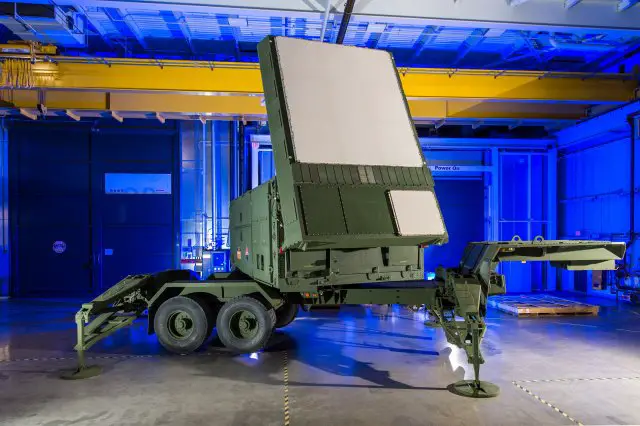|
|
|||
|
Defence & Security News - Raytheon
|
|||
|
|
|||
| Raytheon shows U.S. Army the future of missile defense | |||
|
Raytheon Company (NYSE: RTN) has given the U.S. Army a look into the future of missile defense technology, as the company provided its comprehensive vision for the next generation of air and missile defense radar. The information was supplied to the Army as part of its process to define the requirements for a future Lower Tier Air and Missile Defense Sensor.
|
|||
|
|
|||
 Raytheon's re-engineered Patriot radar prototype uses two key technologies – active electronically scanned array, which changes the way the radar searches the sky; and gallium nitride circuitry, which uses energy efficiently to amplify the radar's high-power radio frequencies (Photo Raytheon) Raytheon's re-engineered Patriot radar prototype uses two key technologies – active electronically scanned array, which changes the way the radar searches the sky; and gallium nitride circuitry, which uses energy efficiently to amplify the radar's high-power radio frequencies (Photo Raytheon) |
|||
|
|
|||
|
"Raytheon's solution for the LTAMDS is based on the more than $200 million that the company has invested in Gallium Nitride (GaN) powered Active Electronically Scanned Array technology," said Ralph Acaba, vice president of Integrated Air and Missile Defense at Raytheon's Integrated Defense Systems business. "Raytheon showed it can quickly and affordably design, build, test and field a GaN-based AESA radar capable of defeating all threats when we exhibited a potential LTAMDS solution at the winter AUSA tradeshow this past March."
Raytheon's GaN-based AESA LTAMDS radar is designed to serve as a sensor on the Integrated Air and Missile Defense Battle Command System network. It will be fully interoperable with NATO, and also retains backwards compatibility with both the current Patriot system and any future system upgrades fielded by any of the 13-nations that currently own Patriot. "Others may draw on lesson learned from the terminated MEADS air and missile defense project or repeatedly re-baselined naval radars; Raytheon's LTAMDS solution builds on successful programs such as the U.S. Navy's Next Generation Jammer and the Air and Missile Defense Radar," said Doug Burgess, director of Integrated Air and Missile defense AESA programs. "Our response, and our AESA GaN radar rollout at AUSA show there doesn't need to be a wait of a decade or longer to get the sensor of the future. It will be available much, much sooner." Raytheon has been leading the innovation and development of GaN for 17 years and has invested more than $200 million to get this latest technology into the hands of the military faster and at lower cost and risk. Raytheon has demonstrated the maturity of the technology in a number of ways, including exceeding the reliability requirement for insertion into the production of military systems. |
|||














